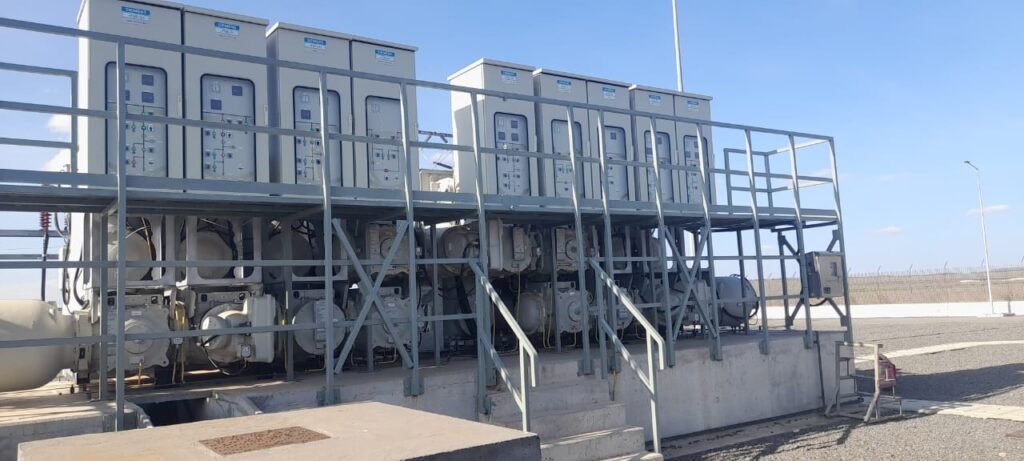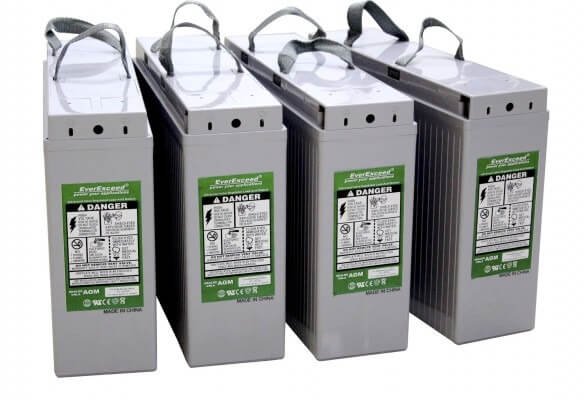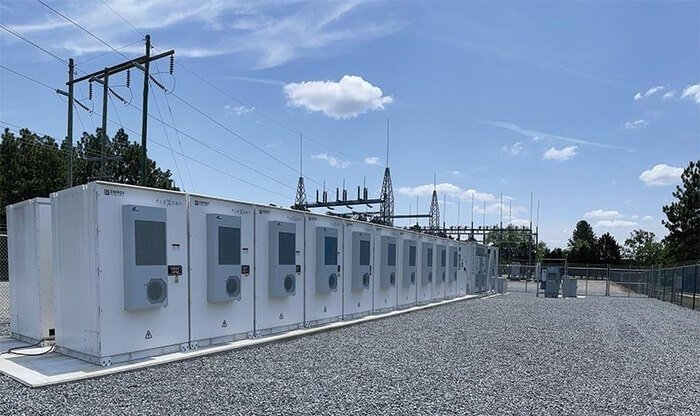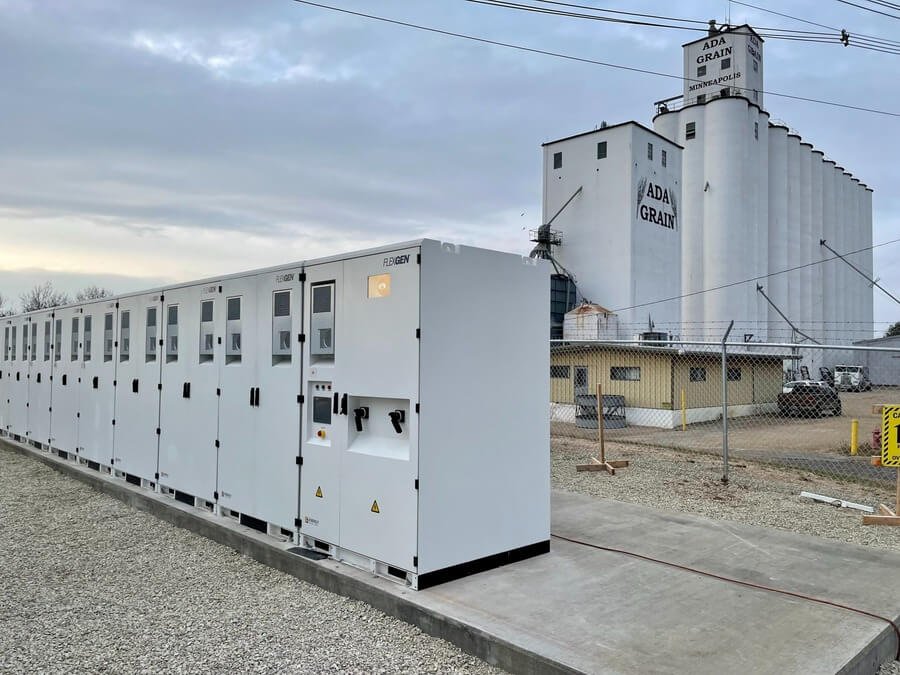The electrical substation batteries are among the most overlooked components of the modern power systems. They are what make a power grid to be reliable by ensuring continuous operation during power outages, system faults, and maintenance activities.
The reliability of electrical substations directly impacts everything, including industrial operations and residential power supply. Substation batteries provide essential DC power to protection systems, control circuits, and communication equipment when the primary power source fails. The transition is seamless and makes all the difference whether it’s a minor interruption or a catastrophic system failure.

Understanding the Role of Battery Systems in Electrical Substations
Electrical substation batteries serve multiple critical functions within the power distribution network. They have the main role of supplying continuous DC power to critical systems in the event that there is no AC power. These involve activating protective relay systems, breaker tripping and closing circuits, SCADA communication systems and emergency lights.
The battery in substation applications must meet stringent reliability requirements. Substation batteries are required to provide immediate power with no interruption as opposed to commercial backup systems which may be allowed to experience short-term interruption. Protection systems do not have milliseconds to wait until they can restore the power, which may lead to the destruction of equipment or blackouts of large areas.
The modern substations are more and more based on advanced monitoring and control systems. These digital devices need clean, stable DC power to operate properly. This stable platform is a product of substation batteries that remove fluctuations in the voltage and keep working at a steady rate irrespective of the behavior of the grid. The battery system also facilitates emergency shutdown procedures where the operators are able to isolate equipment safely in the event of a fault.
Battery System Integration
Contemporary substation designs integrate battery systems with advanced monitoring capabilities. These systems continuously track battery health, charge status, and environmental conditions. Smart battery management systems can predict maintenance needs, optimize charging cycles, and alert operators to potential issues before they become critical failures.
The integration extends beyond basic monitoring. Modern electrical substation batteries work in conjunction with renewable energy sources, load management systems, and grid stabilization equipment. This holistic approach ensures maximum reliability while optimizing operational efficiency across the entire power network.
Types of Electrical Substation Batteries: Technology Overview
Valve-Regulated Lead-Acid (VRLA) Batteries

VRLA batteries are the most widely used technology within substations. These systems are maintenance free and have deployed good reliability and performance tests in the harshest environmental conditions. Sealed design removes the necessity of frequent water additions and delivers stable operation over a long period of time.
The substation batteries that employ VRLA technology are normally of the absorbed glass mat (AGM) or gel electrolyte characteristics. AGM batteries are the best in applications that demand a high discharge rate and this makes them best suited in operation of circuit breakers and fault clearing. Gel batteries, although slightly less in discharge rates, are better in deep-cycle and service life.
VRLA systems are especially well suited to outdoor substation conditions due to their high temperature stability. Such batteries perform comparably at both high and low temperatures, an important feature when it comes to substations at extreme weather conditions. They also have low self-discharge rates so that they are ready even when the grid is out of power over long periods.
Nickel-Cadmium Batteries
Nickel-cadmium technology offers exceptional durability and performance consistency. These electrical substation batteries excel in extreme temperature conditions and provide reliable service for decades with minimal maintenance. Their ability to deliver high currents instantly makes them ideal for critical protection applications.
The robust construction of nickel-cadmium batteries enables them to withstand physical stress and vibration common in substation environments. They maintain performance characteristics even after thousands of charge-discharge cycles, making them cost-effective despite higher initial investment costs.
Emerging Lithium-Ion Solutions
Lithium-ion technology is gaining traction in substation applications due to superior energy density and advanced monitoring capabilities. These systems offer compact footprints, reduced maintenance requirements, and intelligent battery management systems that provide real-time performance data.
Substation batteries utilizing lithium-ion technology provide longer service life and higher efficiency compared to traditional lead-acid systems. The integrated monitoring capabilities enable predictive maintenance strategies, reducing operational costs and improving system reliability.
Critical Sizing and Design Considerations
Load Analysis and Capacity Planning
Proper sizing of electrical substation batteries requires comprehensive load analysis considering both steady-state and transient requirements. Engineers must account for protection system loads, communication equipment, emergency lighting, and motor-operated devices such as circuit breakers and disconnect switches.
The duty cycle analysis forms the foundation of battery sizing calculations. This involves determining the duration and magnitude of various loads during emergency conditions. Critical loads like protection systems operate continuously, while others such as circuit breaker operations occur intermittently but require high instantaneous currents.
Battery capacity calculations must include safety margins to account for aging effects, temperature variations, and unexpected load increases. Industry standards typically recommend 25-30% capacity margins to ensure reliable operation throughout the battery’s service life.
Environmental Considerations
Substation batteries must operate reliably across extreme environmental conditions. Temperature significantly affects battery performance and longevity. High temperatures accelerate aging processes while low temperatures reduce available capacity. Proper thermal management through ventilation or climate control systems is essential for optimal performance.
Humidity control prevents corrosion of battery terminals and monitoring equipment. Sealed battery rooms with controlled ventilation systems maintain optimal environmental conditions while preventing the accumulation of potentially hazardous gases.
Installation and Housing Requirements
Battery installation requires careful consideration of structural requirements, accessibility for maintenance, and safety protocols. Battery in substation installations must comply with electrical codes and safety standards while providing easy access for routine inspections and emergency maintenance.
Seismic considerations are particularly important in earthquake-prone regions. Battery racks and housing systems must withstand seismic forces without compromising structural integrity or creating safety hazards. Flexible connections accommodate building movement while maintaining electrical continuity.
Maintenance Best Practices and Monitoring
Preventive Maintenance Programs

Effective maintenance programs ensure electrical substation batteries deliver reliable service throughout their design life. Regular inspections identify potential issues before they compromise system reliability. Visual inspections check for physical damage, corrosion, and proper ventilation system operation.
Performance testing validates battery capacity and identifies cells requiring attention. Load testing simulates actual operating conditions, ensuring batteries can deliver required power when needed. Impedance testing provides early indication of cell deterioration, enabling proactive replacement strategies.
Advanced Monitoring Systems
Modern battery monitoring systems provide continuous oversight of substation batteries performance. These systems track individual cell voltages, temperatures, and internal resistance values. Trend analysis identifies gradual degradation patterns, enabling predictive maintenance approaches.
Remote monitoring capabilities allow operators to assess battery status from central control facilities. Automated alerts notify maintenance personnel of conditions requiring immediate attention. This proactive approach minimizes the risk of unexpected failures and optimizes maintenance scheduling.
Record Keeping and Documentation
Comprehensive documentation tracks battery performance over time, supporting warranty claims and maintenance planning. Detailed records include installation data, maintenance activities, test results, and environmental conditions. This historical data enables optimization of maintenance intervals and replacement scheduling.
Market Trends and Future Developments
Growing Market Demand
The global substation batteries market continues expanding driven by infrastructure modernization and grid reliability requirements. Aging power infrastructure in developed countries requires battery system upgrades while developing regions build new substation facilities requiring reliable backup power solutions.
Renewable energy integration creates additional demand for substation battery systems. As wind and solar generation increases, substations require more sophisticated battery backup systems to maintain grid stability during variable generation conditions.
Technological Innovations
Battery technology continues evolving with improvements in energy density, cycle life, and monitoring capabilities. Advanced battery management systems provide detailed performance analytics and predictive maintenance recommendations. These innovations reduce total cost of ownership while improving system reliability.
Smart grid technologies drive demand for more sophisticated electrical substation batteries with enhanced communication capabilities. Future systems will integrate with grid management systems, providing real-time status information and participating in grid optimization strategies.
Sustainability and Environmental Considerations
Environmental regulations increasingly influence battery technology selection. Manufacturers focus on developing more sustainable substation batteries with reduced environmental impact and improved recyclability. Lithium-ion systems offer advantages in this regard while maintaining performance requirements.
Conclusion
Electrical substation batteries remain fundamental to power system reliability, serving as the critical link between grid availability and continuous power delivery. The value of an effective battery backup system cannot be overestimated as the power systems are growing complex and interconnected. The knowledge about the different technologies, adequate sizing techniques and maintenance will help in perfect performance of systems and durability.
The development of battery technology brings forth new possibilities of greater reliability and low costs of operation. In choosing VRLA systems with a known record of reliability or in seeking out lithium-ion solutions to achieve a higher level of performance, the right engineering evaluation and installation procedures are critical.
IET is a leader in electrical engineering solutions to the East African market with over 75 years experience in Kenya, Uganda and Tanzania in electrical systems power transmission and distribution. Our comprehensive understanding of electrical substation batteries and critical power infrastructure positions us uniquely to support your substation projects from initial design through ongoing maintenance. Call IET today to find out how our experience successfully completing complicated electrical projects will guarantee that your substation battery systems will provide the reliability your operations need.

Leave a Reply